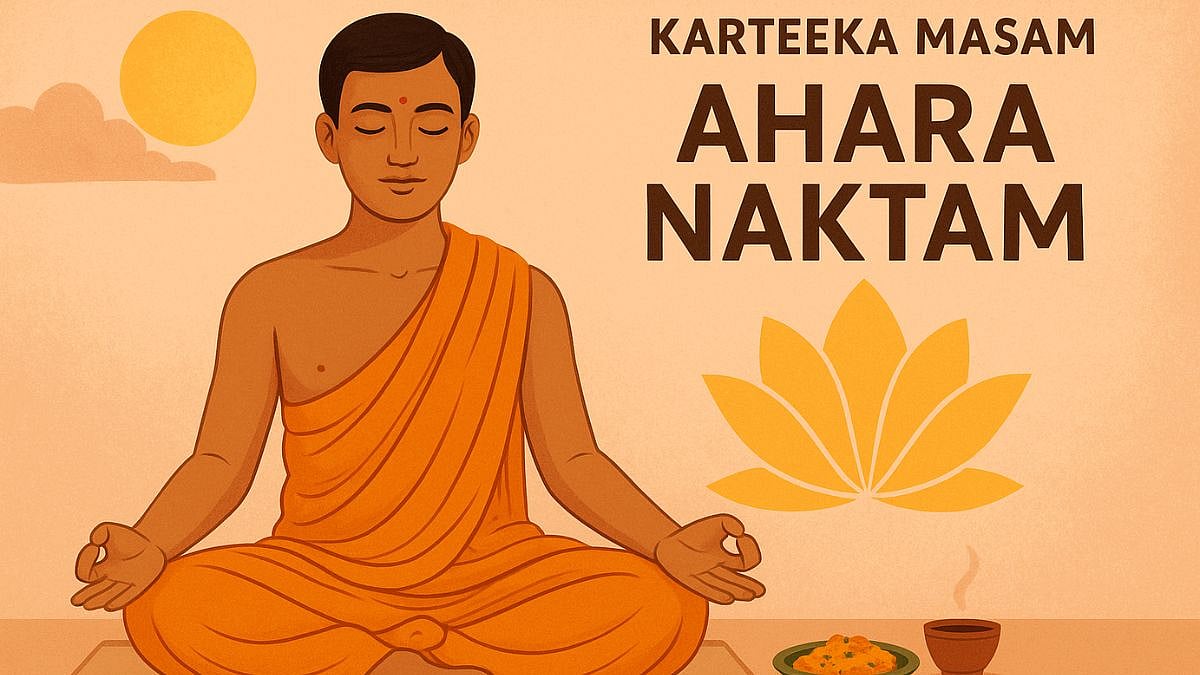Ahara Naktam During Karteeka Masam: Fasting Practices For Body, Mind And Soul
“Naktam” means “by the night”, and “Ahara” is food. Karteeka masam is about to begin. This happens typically in the winter season, and our activity levels become low. Being a winter month, the Jathara Agni, or the digestive fire, levels are lower compared to other seasons.

Ahara Naktam During Karteeka Masam: Fasting Practices For Body, Mind And Soul | AI Representational Image
“Naktam” means “by the night”, and “Ahara” is food. Karteeka masam is about to begin. This happens typically in the winter season, and our activity levels become low. Being a winter month, the Jathara Agni, or the digestive fire, levels are lower compared to other seasons. Once the process is muted, the energy requirement is low, and then it makes sense to regulate the food input as well.
This is the time of the year when prolonged daytime fasting called “Naktam” is practised. As it pertains to food, it is called Ahara Naktam. Broadening the coverage under the “Ahara” definition, we can include entertainment, gossip, screen time and all such things that consume our attention and energy and result in some sort of a reaction at our end due to triggered energies.
Fasting is practised in many cultures. Limiting food consumption has an impact on one’s physical and mental states and is recognised across the world. Autophagy is heard more now. A month-long fasting from sunrise to sunset is practised by a large community.
A forty-day-long fast once a year is practised by another numerically large community to commemorate an occasion. In both the above cases, giving up luxuries, reducing intake, spending time in reflection, and alms-giving are common. Giving up the mental weaknesses and physically cleansing the systems do happen using fasting.
Naktam is practised in different ways and is performed during the Karteeka month. Those who can strictly stand the fasting, whose health and age permit, do fast from morning till evening. Upon Chandrodaya (moonrise), simple food is eaten once a day with gratitude. This one meal helps them in surviving till the next evening.
Thus, one meal in twenty-four hours is the norm. As one advances in age or develops poor health, fasting till evening may be difficult. Such people wait till the peak of the sun phase gets over by two in the afternoon and accept food. A few practice single meals in the mornings. Whichever is the custom, moderation is the essence. The time available is spent in meditation, contemplation, and activities that promote inward looking.
When we sincerely attempt such fasting practices, our bodies and minds become light due to detoxification, and our souls become ready for the onwards journey.
About the author
Dr. S. Ainavolu is a Mumbai-based teacher of Management and Tradition.
Published on: Wednesday, October 15, 2025, 05:40 AM ISTRECENT STORIES
-
-
-
-
-